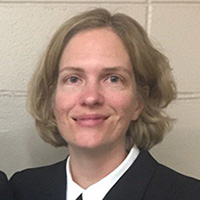The Indian Health Service launched a new IHS opioid website to share information and increase communication surrounding opioids with key stakeholders across Indian Country. The new site is available at www.IHS.gov/opioids.
The IHS opioids website provides patients, health care providers, tribal leaders, tribal and urban program administrators, and other community members with opioid related resources in one location, allowing for quick and easy access to information. The new website includes details on approaches to preventing opioid abuse, proper pain management and recovery tools, how to respond to an opioid overdose, funding opportunities, and much more. The IHS is committed to combating the opioid crisis, and this new section of the website is one of many positive steps towards reducing and preventing opioid misuse.
The impact of the opioid crisis on American Indians and Alaska Natives is immense. The Centers for Disease Control and Prevention (CDC) reported that American Indians and Alaska Natives had the highest drug overdose death rates in 2015 and the largest percentage increase in the number of deaths over time from 1999-2015 compared to other racial and ethnic groups. During that time, deaths rose more than 500 percent among American Indians and Alaska Natives.
In March 2017, the IHS chartered the National Committee on Heroin, Opioids and Pain Efforts (also known as the HOPE Committee). The HOPE committee consists of a multidisciplinary team of health care professionals across IHS that work to promote appropriate and effective pain management, reduce overdose deaths from heroin and prescription opioid misuse, and improve access to culturally appropriate treatment.
The committee has created online and in-person training courses to expand workforce capacity and community awareness surrounding opioids, as well as worked to expand access to naloxone for trained first responders serving in our communities. There has been some progress in our tribal communities, but we are aware of the remaining challenges and opportunities to work together to expand access to treatment, support long-term recovery, and enhance prevention efforts.
The IHS remains committed to our mission of raising the physical, mental, social, and spiritual health of American Indians and Alaska Natives to the highest level. We recognize the importance of collaborating and consulting with tribes to develop a comprehensive plan for addressing the opioid crisis in Indian Country. We hope that this new expanded opioid website will help us work towards addressing the opioid crisis by sharing information, announcements, training opportunities, and the latest updates surrounding best and promising practices across the Indian health care system.
Related Content:
“Opioids in Indian Country: Beyond the Crisis to Healing the Community”



